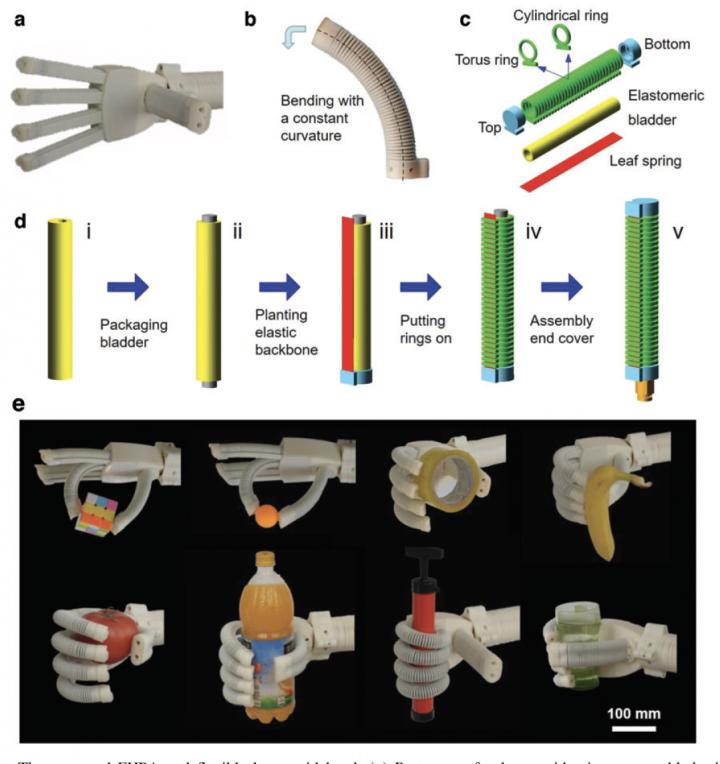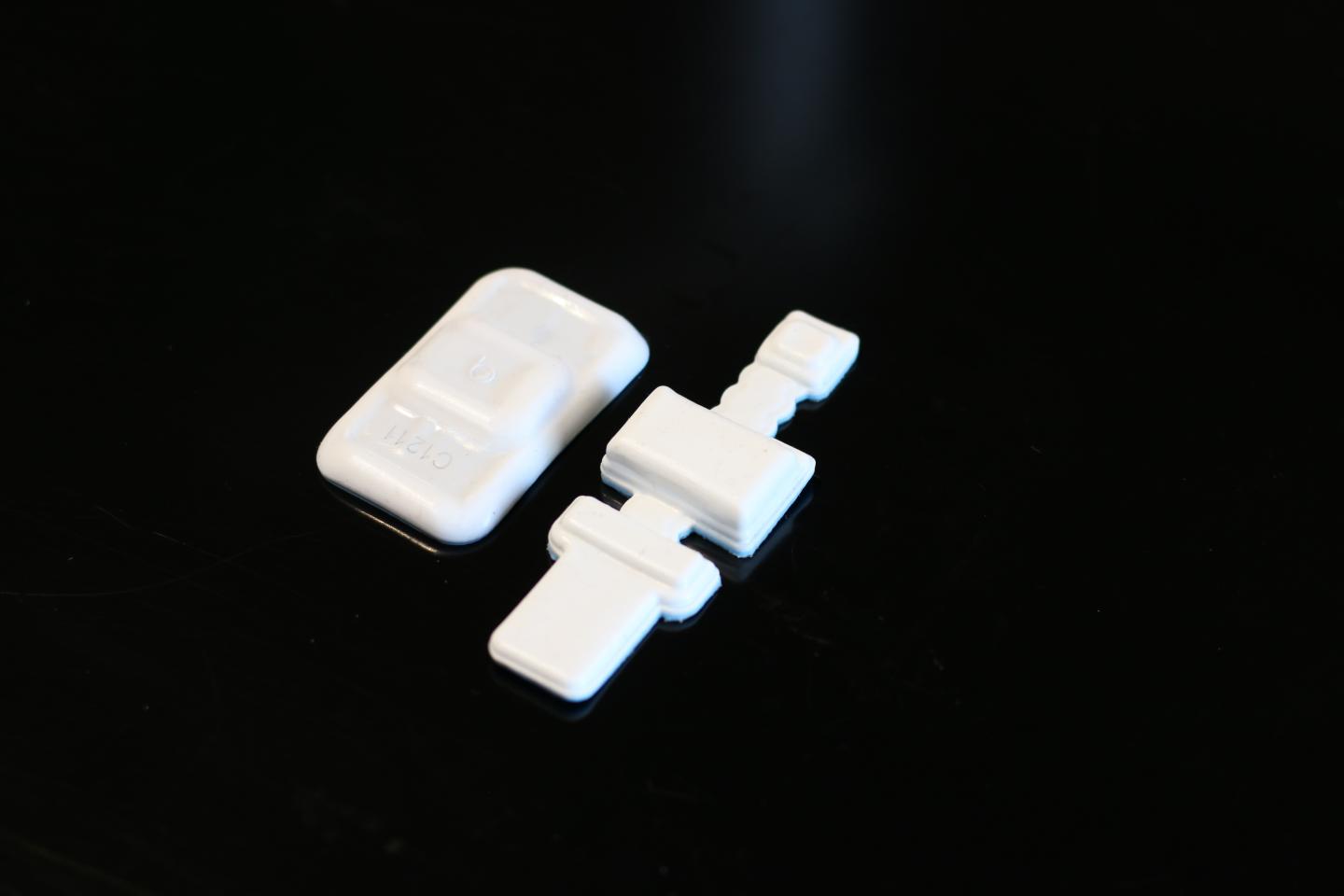UMass Amherst experts focus on potential benefits of wearable sensors
Tag: ROBOTRY/ARTIFICIAL INTELLIGENCE
Children think robots can help the elderly — but not their own grandparents
Researchers also found that robots that look too much like humans can be scary for kids
Robot technology for everyone or only for the average person?
People come in all kinds of shapes and sizes and with different needs; robot technology needs to reflect that
Soldiers could teach future robots how to outperform humans
ADELPHI, Md. — In the future, a Soldier and a game controller may be all that’s needed to teach robots how to outdrive humans. At the U.S. Army Combat Capabilities Development Command’s Army Research Laboratory and the University of Texas…
AI with ‘imagination’ could help doctors with diagnosis, particularly for complex case
Babylon’s new Artificial Intelligence with ‘imagination’ could help doctors with diagnosis, particularly for complex cases
Ultraviolet communication to transform Army networks
Of ever-increasing concern for operating a tactical communications network is the possibility that a sophisticated adversary may detect friendly transmissions. Army researchers developed an analysis framework that enables the rigorous study of the detectability of ultraviolet communication systems, providing the…
NIST’s SAMURAI measures 5G communications channels precisely
Engineers at the National Institute of Standards and Technology (NIST) have developed a flexible, portable measurement system to support design and repeatable laboratory testing of fifth-generation (5G) wireless communications devices with unprecedented accuracy across a wide range of signal frequencies…
Army advances learning capabilities of drone swarms
Army researchers developed a reinforcement learning approach that will allow swarms of unmanned aerial and ground vehicles to optimally accomplish various missions while minimizing performance uncertainty. Swarming is a method of operations where multiple autonomous systems act as a cohesive…
AI-enhanced precision medicine identifies novel autism subtype
Tool lays groundwork for autism early diagnosis and intervention
Rail industry to benefit from robot tech and data project
The Institute of Rail Research launches £1.8m project to improve maintenance of the UK’s railway rolling stock
Russian developers created a platform for self-testing of AI medical services
Experts from the Center for Diagnostics and Telemedicine have developed a platform for self-testing services which is based on artificial intelligence and designed for medical tasks, such as for analyzing diagnostic images. The first working prototype of the platform is…
Personality-based approach may be key to partnering with robots
ABERDEEN PROVING GROUND, Md. — Human facial expressions could be one of the keys in building trust between Soldiers and autonomous agents. “We wanted to characterize and quantify factors that impact the emotional experience that humans have with trust in…
Understanding why some children enjoy TV more than others
Children’s own temperament could be driving the amount of TV they watch – according to new research from the University of East Anglia and Birkbeck, University of London. New findings published today show that the brain responses of 10-month-old babies…
NIH harnesses AI for COVID-19 diagnosis, treatment, and monitoring
Collaborative network to enlist medical imaging and clinical data sciences to reveal unique features of COVID-19
NIH funds Dartmouth and Tufts AI tool to help doctors cure cancer
Using artificial intelligence (AI) to cure cancer may sound like science-fiction, but Eugene Santos Jr. , a professor of engineering at Dartmouth, disagrees. Santos is the Principal Investigator of a newly-funded project from the National Institutes of Health (NIH) to…
A simpler, high-accuracy method to detect rare circulating tumor cells in blood samples
Metastasis – the development of tumor growth at a secondary site – is responsible for the majority of cancer-related deaths.
A simpler, high-accuracy method to detect rare circulating tumor cells in blood samples
Study demonstrates the effectiveness of a new, innovative machine learning technique to analyze the presence of rare circulating tumor cells (CTCs) in blood; method yields 88.6% overall accuracy in patient blood samples, 97% in cultured cells
Machine learning makes drug repurposing for psychiatric disorders more effective
Researchers have correlated information on drugs, genes and diseases to identify potential candidates for psychiatric and neurological treatment; the methodology they developed will be used to search for drugs against COVID-19
VantAI and TARA Biosystems partner to discover new medicines
The partnership will unlock the combined the value of in silico technology and in vitro human biology
Diagnostics specialists’ take on the accuracy of CT scans
The use of computed tomography in outpatient computed tomography centers (OCTC) is entirely consistent with the clinical data and global best practices. This is also an effective tool for diagnosing the coronavirus infection COVID-19 In April the Moscow clinics had…
Researchers build first AI tool capable of identifying individual birds
New research demonstrates for the first time that artificial intelligence (AI) can be used to train computers to recognise individual birds, a task humans are unable to do. The research is published in the British Ecological Society journal Methods in…
Artificial Intelligence to identify individual birds of a same species
Humans have a hard time identifying individual birds just by looking at the patterns on their plumage. An international study involving scientists form the CNRS, Université de Montpellier* and the University of Porto in Portugal, among others, has shown how…
Physicians urge hospitals to become ‘artificial intelligence ready’
A group of doctors and data scientists is calling on hospitals to create clinical departments devoted to artificial intelligence (AI) to harness the power of the technology to transform patient care. While there have been many predictions of AI’s potential…
Machine learning system can detect foreign social media influence campaigns using content alone
Content-based features predict social media influence operations
Report exposes rampant illegal fishing in North Korean waters
Ground-breaking study reveals hundreds of vessels fishing illegally in one of the world’s most contested ocean regions, contravening United Nations sanctions and fueling overfishing
Optimizing neural networks on a brain-inspired computer
Many computational properties are maximized when the dynamics of a network are at a “critical point”, a state where systems can quickly change their overall characteristics in fundamental ways, transitioning e.g. between order and chaos or stability and instability. Therefore,…
Tracking misinformation campaigns in real-time is possible, study shows
PRINCETON, N.J.–A research team led by Princeton University has developed a technique for tracking online foreign misinformation campaigns in real time, which could help mitigate outside interference in the 2020 American election. The researchers developed a method for using machine…

Powerful human-like hands create safer human-robotics interactions
Need a robot with a soft touch? A team of Michigan State University engineers has designed and developed a novel humanoid hand that may be able to help.
Children with type 1 diabetes may have a less desirable gut bacteria composition
Artificial intelligence defines the microbiome’s role in diabetes development
Concordian co-leads effort to see future of AI from an Indigenous perspective
A collaborative position paper challenges long-held assumptions about Western approaches to technology
NTU Singapore and Google Cloud develop rapid-response chatbot to address freshmen queries
Nanyang Technological University, Singapore (NTU Singapore) has rolled out a new virtual assistant powered by Google Cloud to help some 6,000 incoming freshmen transition to university life on the NTU Smart Campus. Named Project Lyon 2.0, the virtual assistant chatbot…
NTU Singapore and Google Cloud develop rapid-response chatbot to address freshmen queries
Nanyang Technological University, Singapore (NTU Singapore) has rolled out a new virtual assistant powered by Google Cloud to help some 6,000 incoming freshmen transition to university life on the NTU Smart Campus. Named Project Lyon 2.0, the virtual assistant chatbot…
Which way to the fridge? Common sense helps robots navigate
A robot travelling from point A to point B is more efficient if it understands that point A is the living room couch and point B is a refrigerator, even if it’s in an unfamiliar place.
Which Way to the Fridge? Common Sense Helps Robots Navigate
Carnegie Mellon’s Winning Strategy Speeds Up Robotic Searches
Media tip sheet: Going high-tech in ecology
Featured presentations at the 105th Annual Meeting of the Ecological Society of America
Powerful human-like hands create safer human-robotics interactions
EAST LANSING, Mich. – Need a robot with a soft touch? A team of Michigan State University engineers has designed and developed a novel humanoid hand that may be able to help. In industrial settings, robots often are used for…
Parasite infestations revealed by tiny chicken backpacks
Blood-feeding livestock mites can be detected with wearable sensor technology nicknamed “Fitbits for chickens.”

Science fiction becomes fact — Teleportation helps to create live musical performance
Teleportation is most commonly the stuff of science fiction and, for many, would conjure up the immortal phrase “Beam me up Scotty”.

Clinical-grade wearables offer continuous monitoring for COVID-19
Stamp-sized device comprises a suite of clinical-grade sensors, including temperature and pulse oximetry
Human Brain Project announces new phase
The Human Brain Project (HBP) announces the start of its final phase as an EU-funded FET Flagship. The European Commission has signed a grant agreement to fund the HBP with 150 million Euros from now until 2023. Over the next…
The MIT Press and UC Berkeley launch Rapid Reviews: COVID-19 journal
The new open access, rapid-review overlay journal aims to combat misinformation in COVID-19 research
German federal funding for research on the differentiation of style and topic in text data
German Ministry of Education and Research is funding Sophie Burkhardt to establish a Computer Science junior research group investigating how to independently control the content and style of texts generated using artificial intelligence
Human Brain Project announces new phase
The Human Brain Project (HBP) announces the start of its final phase as an EU-funded FET Flagship. The European Commission has signed a grant agreement to fund the HBP with 150 million Euros from now until 2023. Over the next…
The MIT Press and UC Berkeley launch Rapid Reviews: COVID-19 journal
The new open access, rapid-review overlay journal aims to combat misinformation in COVID-19 research
German federal funding for research on the differentiation of style and topic in text data
German Ministry of Education and Research is funding Sophie Burkhardt to establish a Computer Science junior research group investigating how to independently control the content and style of texts generated using artificial intelligence
Side effects of testicular cancer predicted by machine learning
Machine learning to predict chemotherapy-associated nephrotoxicity in testicular cancer patients
AI dual-stain approach improved accuracy, efficiency of cervical cancer screening
In a new study, a computer algorithm improved the accuracy and efficiency of cervical cancer screening compared with cytology (Pap test), the current standard for follow-up of women who test positive with primary human papillomavirus (HPV) screening. The new approach…
New automotive radar spots hazards around corners
Using radar commonly deployed to track speeders and fastballs, researchers have developed an automated system that will allow cars to peer around corners and spot oncoming traffic and pedestrians. The system, easily integrated into today’s vehicles, uses Doppler radar to…
Those with IDD living in group homes more likely to die from COVID-19, study shows
Syracuse, N.Y. – A new study published recently in ScienceDirect by researchers from Syracuse University and SUNY Upstate Medical University shows that people with intellectual and developmental disabilities (IDD) living in residential group homes are more likely to be diagnosed…
AI dual-stain approach improved accuracy, efficiency of cervical cancer screening
In a new study, a computer algorithm improved the accuracy and efficiency of cervical cancer screening compared with cytology (Pap test), the current standard for follow-up of women who test positive with primary human papillomavirus (HPV) screening. The new approach…